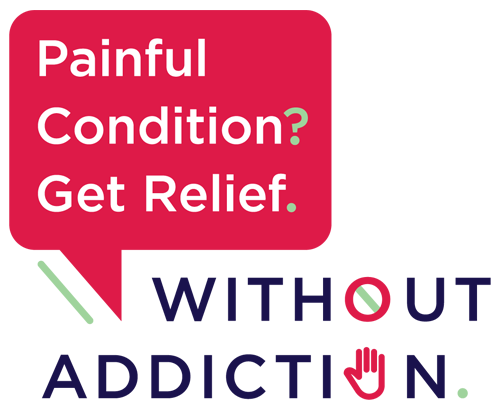Chronic pain can creep up in any part of the body, but no matter where you experience it, it’s uncomfortable, distracting, and something you don’t need to endure.
From neck pain to back pain to chronic pain in your joints, you have options when it comes to pain management. Working with your primary care doctor may prove useful, but often you end up treating symptoms of the pain rather than the root cause. To create a personal pain management plan that can really help with chronic pain, consider seeing a chiropractor.
Primary causes of chronic pain
Breaking pain down into four pillars, Dr. Johnny Garcia from Injury2Wellness Centers says there are many reasons that bring patients in who present with chronic pain, however causes aren’t as varied.
There are mechanical, chemical, nutritional, and mental causes when you look at chronic pain as a whole. Mechanical causes include old sports injuries, how you sit at your desk all day working, and even what position you sleep in. Chemical causes include imbalances within your body that lead to inflammation and discomfort. Since certain foods are natural inflammatories, your diet can also impact chronic pain, so there are nutritional causes as well. Finally, mental stressors, whether at home or at work definitely accumulate over time, causing physical manifestations in the body that hurt.
Focusing on these pillars allows Dr. Garcia to improve the brain-body connection, and make sure everything is in alignment and functioning.
What happens when you visit a chiropractor for chronic pain
The key to a successful first visit with a chiropractor, according to Dr. Garcia, is information. A detailed history of the problem is essential to properly managing it. “Chronic pain can have started a very long time ago,” says Dr. Garcia, “and history helps determine the root cause.”
A patient may have to go as far back as the birth process or a high school athletic injury; the more information, the better for truly diagnosing the source of chronic pain.
Next, a full exam takes place. This can include x-rays and even an MRI to complete a detailed evaluation. Some practices will also do blood work to see if the cause of the issue is chemical or nutritional; however, the spine gets looked at first because of its intimate relationship to the nervous system.
Between these two strategies, as much information as possible gets compiled, and with all that detail, a personal pain management plan is crafted. The plan itself can vary greatly based on the source of chronic pain, but most often they center on the spine/nervous system, and what Dr. Garcia calls the brain-body connection.
The goal is to make any sore joints as mobile as possible again, while also using a variety of therapeutic options to help reduce chronic pain.
How a personal pain management plan works
There are often two primary components to a personal pain management plan, regardless of whether you have chronic back pain, chronic neck pain, or feel consistent pain in another area of the body. The first is what happens in the office, the other is what you’re able to do at home.
In-office, your care plan will most likely include adjustments. These will vary as your care progresses, but the goal is always to return a normal range of motion to affected joints. Therapy may also take place to help reduce pain and manage future pain to make active care easier.
At home, you may have a series of exercises to complete on a regular basis. You may also need to make ergonomic modifications to how you sit, work, or sleep. The doctor of chiropractic may also suggest adjustments to your diet, eliminating foods that cause inflammation or adding supplements like fish oil or turmeric.
For Dr. Garcia, the goal is to, “make the most impact to intervene and help the patient restore motion where there should be more and alleviate those pain systems to allow for that.”
Working together, these two elements of a personal pain management plan address all the components of chronic pain by un-training the body from any bad habits that exacerbate the pain, as well as by addressing the root cause.
Working with a chiropractor instead of a primary care physician
According to Dr. Garcia, it’s essential for a patient to agree to and follow the care plan, to get out of chronic pain. The assumption is that, when a person comes to see him, they’re ready to work, but that isn’t always the case.
“I ask my patients, ‘Are you sick and tired of being sick and tired?’” If they answer yes, if they admit that simply using medication, which can be how a GP treats chronic pain, is no longer working, then the real work can begin. “If [chiropractic care] is something they truly want, then the patient will have the best outcome,” says Dr. Garcia.
If the patient has only previously used medication to treat chronic pain, then the conversation continues, says Dr. Garcia, about how medicine never really addresses the exact cause of the problem, just the symptoms.
“Nobody likes to be in pain, but it’s just a symptom. Medication will never get you free of the condition that’s causing the pain.”
Many medications are addictive, especially opioids, which has led to a national crisis of addiction and death. It’s always best to consider non-drug care first, then drugs and surgery as a last resort.
A general practitioner-based pain management treatment plan will likely include medication. A chiropractor-based plan addresses more causative factors, and as care continues, most patients rely on medications less and less. Based on need, says Dr. Garcia, many patients even realize they no longer need any medication at all to, “feel better and live better.”
Get relief for your chronic pain
The best analogy for seeking chiropractic care, whether you have chronic pain or not, is to think about going to the dentist, says Dr. Garcia. You go to the dentist as a preventive measure for your teeth. Going to the chiropractor is the same, only for your spine.
Seeing a chiropractor can address chronic pain, but it’s also somewhere you can go even when you’re feeling healthy. Regular visits shouldn’t be seen as an alternative to care from your primary doctor, but rather a companion piece to your overall health.





